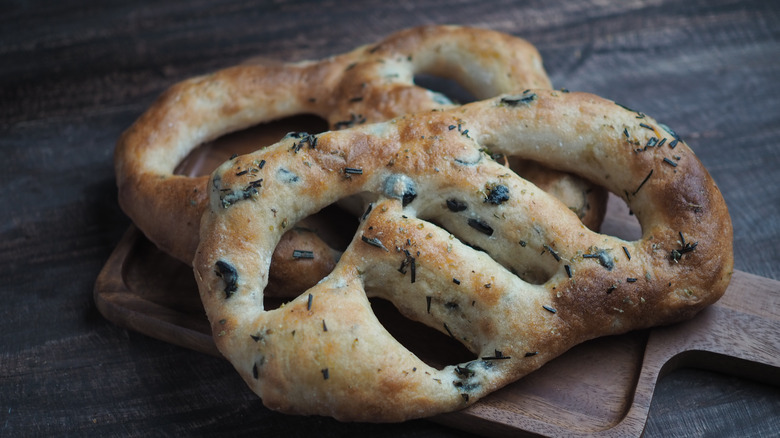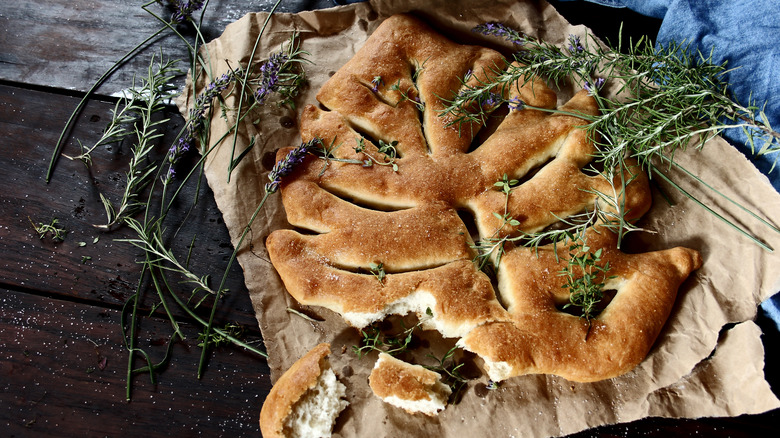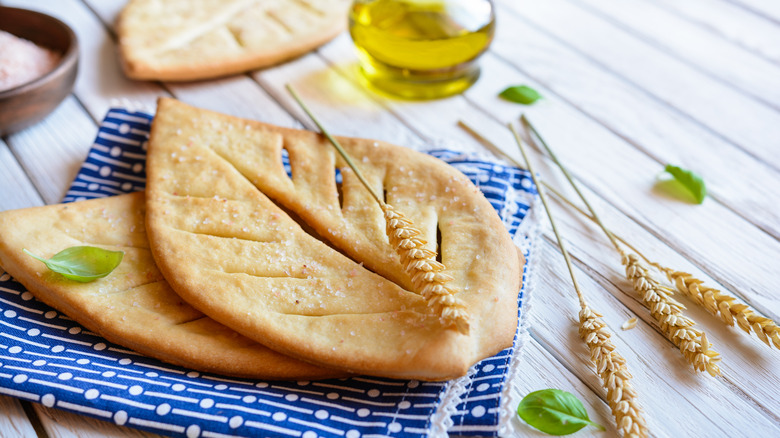What Is Fougasse And What Does It Taste Like?
French cooking techniques form the basis of much of modern professional cooking with many using techniques like sauteing and poaching every day. The country's popular dishes like bouillabaisse, creme brulee, crepes, and onion soup, can also be easily found around the globe. French baked goods are another popular treat that can be found at many eateries, which include everything from macarons to croissants. However, one you may not be as familiar with is fougasse.
First of all, it isn't pronounced like the 1980s Washington D.C. punk band Fugazi. The actual pronunciation sounds more like "foo gahhss." As for what it is, think of fougasse as the French cousin to the far more familiar Italian focaccia, which is only cut differently, creating more crust surface area. This type of bread can also be loaded with toppings like herbs, cheese, or even vegetables. There are other differences but that's probably the closest comparison, and much like focaccia, it's absolutely delicious.
The way it's cut gives it more of a crispy bite
Visually, there's no doubt that fougasse is extremely distinctive. The design, which is a critical part of any fougasse loaf, is made to look like a leaf. But fougasse isn't just for looking at, it's a legitimately delicious bread that's just as good at being food as it is at being an art piece. Because it's typically topped with herbs and salt, much like focaccia, the taste would probably be quite familiar to most. The main difference is in how it's cut — those extra slits create additional crust area, so its texture is going to have a little more crispiness than focaccia.
There are, however, regional differences in how it's presented and what it's called. All breads in this family originally spring from a Roman flatbread called "panus focacius" named after the hearth where it was commonly cooked. It's called focaccia in Italy, fougasse in France, pogaca in Turkey, and fogaca in Portugal. And while fougasse can be found all over France, it's typically most associated with one particular area.
Fougasse is most associated with Provence
In France, fougasse is most commonly associated with the southern area of Provence, the same place the aptly-named "herbes de provence" come from. And indeed, herbes de provence or its constituent parts, most commonly rosemary, are much like focaccia in that it is frequently kneaded into the dough of fougasse as it cooks, ensuring maximum herb-infused flavor.
Authentic provencal fougasse might also feature olives, onions, anchovies, or some combination of all three as toppings. When combined with ingredients like that, fougasse can effectively go from being a snack to a hearty meal in itself.
While fougasse may seem intimidating at first glance, it's not all that hard to make at home. If you've made focaccia before, you already understand the core principle at play. So if you're a fan of crispy, herb-forward bread, try your hand at making this the next time you're craving something savory.


